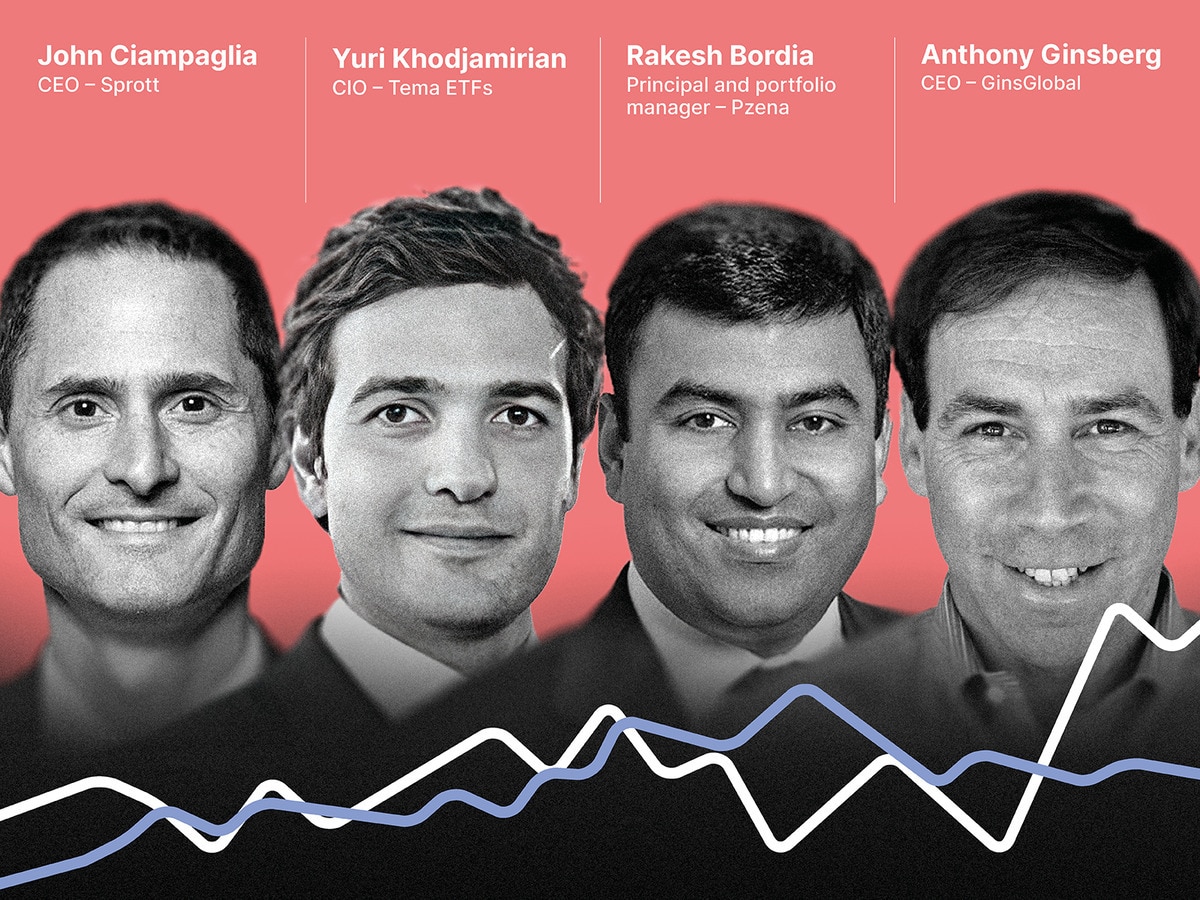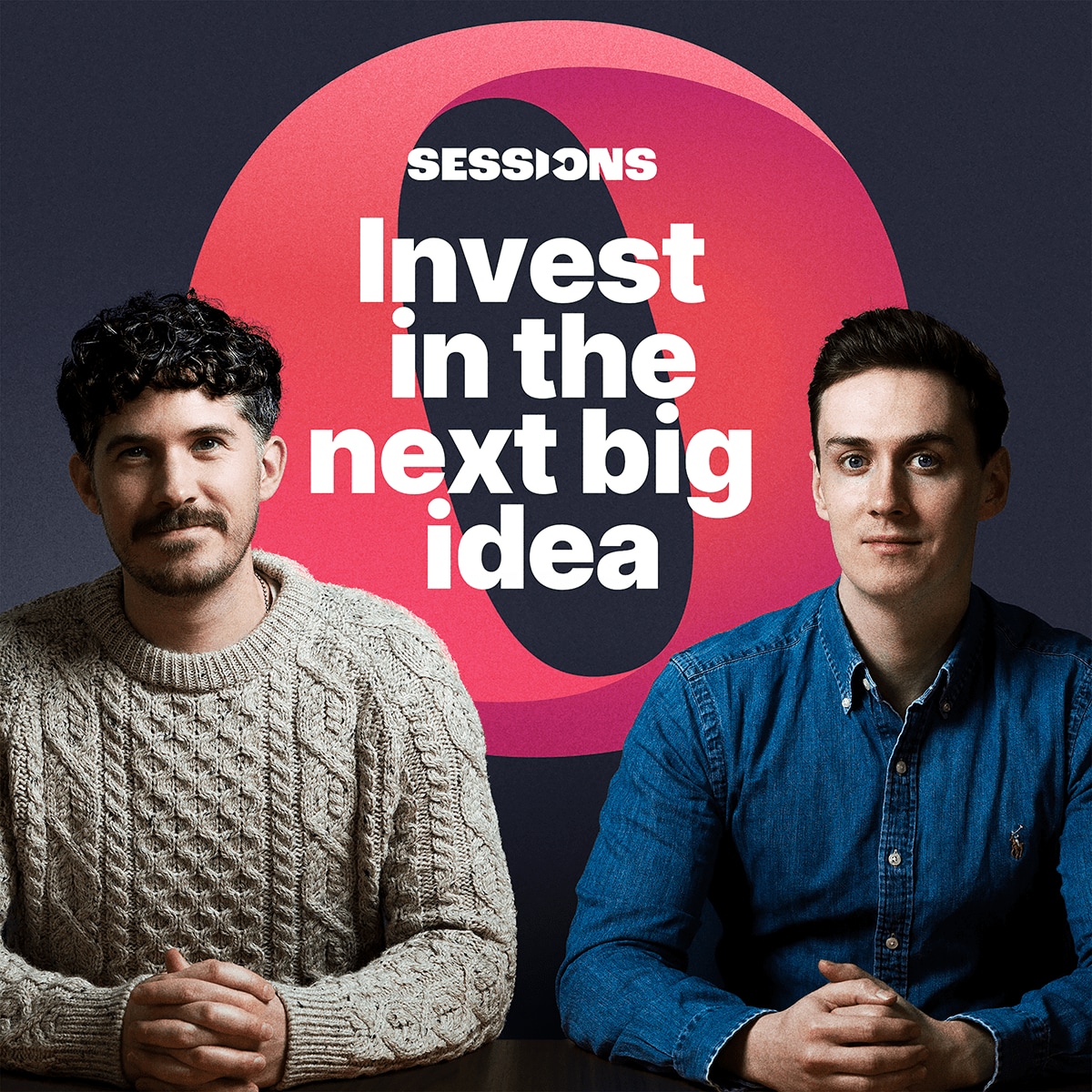Recent guests on the Opto Sessions podcast from Sprott Asset Management, Tema ETFs, GinsGlobal and Pzena Investment Management all shared their strategy secrets with listeners, including the time horizons for their investments, how they size up new opportunities and the key characteristics of businesses they invest in.
LISTEN TO THE INTERVIEW:
These conversations have shed light on the strategies these investors employ to stay ahead of markets and achieve alpha for clients.
John Ciampaglia is CEO of Sprott Asset Management and senior managing partner of Sprott Inc., founded in 1981 by Eric Sprott — “the champion of precious metals investments”. Ciampaglia previously held senior positions at Invesco Canada and TD Asset Management.
Yuri Khodjamirian is chief investment officer at Tema ETFs, a new platform specialising in actively managed thematic ETFs. Prior to Tema, he spent a decade at Majedie Asset Management, growing the UK Income Fund to an impressive £1.5bn.
Anthony Ginsberg is founder and CEO of GinsGlobal Index Funds, and an indexing specialist who previously worked at Barclays and Salomon Brothers (now Citibank).
Rakesh Bordia is principal and portfolio manager at Pzena Investment Management. His focus is primarily on understanding emerging markets, and before Pzena, Bordia worked at Booz Allen Hamilton [BAH], focusing on innovation and growth strategies.
The big alpha ideas
Every investment company has its own macro strategy or niche that it employs to achieve alpha. For Sprott, precious metals constitute its chosen investment focus. “Because we only do metals and mining, it gives us a lot of insight,” Ciampaglia told Opto Sessions.
Now Sprott is channelling its focus towards energy transition materials, as global economies decarbonise — “the companies that have revenues and or assets tied specifically to the critical minerals we think will be the biggest beneficiaries of the transition”. Earlier this year, Sprott launched four ETFs in its suite of energy transition funds, including the Sprott Energy Transition Materials ETF [SETM].
An undiluted portfolio is key to success, says Ciampaglia. “I will often look at a competitors’ funds and chuckle, because I’ll see a green metals ETF, and say, ‘Why is a gold company with oil and gas royalties in that particular fund?’ That makes no sense to us whatsoever.”
For Tema ETFs, which launched earlier this year, it’s all about offering exposure to highly specific themes such as luxury goods and monopolies.
These forays into new markets are not about chasing fly-by-night trends — they are underpinned by methodical research, Khodjamirian told Opto Sessions. “We define themes using lots of proprietary tools, so we understand precisely that this set of stocks fits this particular theme.”
“After that, we look at the market cap of the entire industry. I think one of the risks in thematic investing is niche funds that are just too small… It’s about the substance of investment products, not just the headline story — what this theme really is.”
“I think one of the risks in thematic investing is niche funds that are just too small… It’s about the substance of investment products, not just the headline story — what this theme really is.”
Are you finding this content insightful? Leave us some feedback here.
Why size matters
Size also matters to GinsGlobal, says Ginsberg: “We have a matrix where the minimum market cap has to be $500m… Our holdings are typically large caps, mid-caps and then some mega caps.”
However, GinsGlobal’s alpha strategy depends on offering broad exposure. The HAN-GINS Tech Megatrend UCITS ETF [ITEK.L] tracks an index that, crucially, gives “equal weighting across 120 broad tech holdings,” rather than being overweighted, like some funds, towards FAANG mega-stocks.
The ITEK index also tracks eight sub-themes — digital entertainment, robotics and automation, cybersecurity, blockchain, social media, cloud computing and big data, cars of the future and genomics — representing the so-called ‘fourth industrial revolution’.
It’s this approach that has enabled GinsGlobal to benefit, for example, from the recent artificial intelligence (AI) feeding frenzy. “AI has been around for a while. All of a sudden, the light-bulb went on, and you've seen a massive upside,” said Ginsberg.
For Pzena, the key source of alpha is pinpointing that one critical component giving a stock edge. “It could be better products, better technology, better scale, better cost structure or anything else,” Bordia said, “As long as the company has that unique economic advantage versus its competition”.
“As long as the company has that unique economic advantage versus its competition.”
The bigger picture: nailing the right time horizon
Understanding time horizons is crucial to successful investment, something the guests all acknowledge.
Tema’s Khodjamirian says this is where an astute active fund manager is vital: “We think very, very long term, in multiple decades, about themes. But the stock market operates on much shorter horizons. So we have fund managers that have to marry these two things: the long-term theme and an understanding of the market.”
Pzena’s Bordia says its average holding period for stocks is three to five years. “That’s where most stocks need to show the market their true earnings potential.
“We dabble in the deep-value part of the universe, and that means we are investing in businesses where there is no catalyst inside. And the company has a lot of uncertainty on the journey forward, which generally is a multi-year journey. That's the timeframe you need for the stock to work as the company goes through the journey of fixing its profitability or for industry demand and supply to come into balance.“
Ginsberg cites a similar three to five years for technology stocks. “Over an almost five-year period, we’ve produced close to 50% gains. That meant riding out some of the volatility over a minimum of three years.”
Ciampaglia points out that “mining, in general, is a volatile sector” and that it “might fall 20% in a month” — so a long-term time horizon is crucial. Many companies are in “development stages”: pre-profit, building or exploring new mines; making them “generally less liquid”.
As a result, investors must “think about big picture secular growth drivers” and, ultimately, have conviction — something, he says, Eric Sprott excelled at. “He might have looked wrong for a long time, but eventually, he looked right.”
For more ways to listen:
Listen to the full interview and explore our past episodes on Opto Sessions. You can also check out all our episodes via our YouTube Channel.
Continue reading for FREE
- Includes free newsletter updates, unsubscribe anytime. Privacy policy


